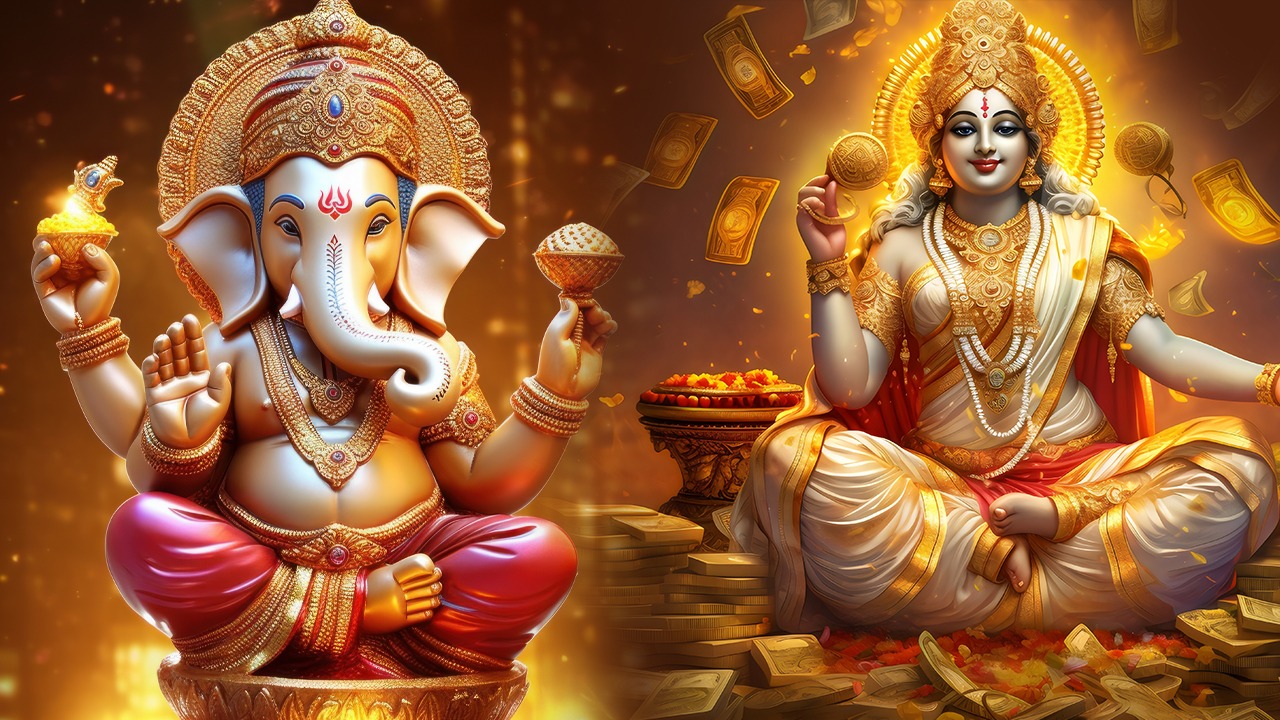Diwali celebrates Lord Rama's victorious return to Ayodhya, but worship during the festival predominantly centers on Goddess Lakshmi and Lord Ganesha. Their combined blessings symbolize the balance of wealth, wisdom, and success—key elements for prosperity and auspicious new beginnings in the lives of devotees.
Diwali, known as the Festival of Lights, commemorates many mythological events, most famously Lord Rama’s triumphant return to Ayodhya after defeating Ravana. While Lord Rama’s story sets the festival’s foundation, the evening rituals prominently focus on worshipping Goddess Lakshmi, the deity of wealth and prosperity, and Lord Ganesha, the remover of obstacles and god of wisdom.
The tradition of worshipping Lakshmi and Ganesha during Diwali is rich in symbolism and spiritual significance. It is believed that when Lord Rama returned to Ayodhya, Goddess Lakshmi and Lord Ganesha also arrived with him, bringing prosperity and auspiciousness to the kingdom. Thus, lighting diyas (earthen lamps) and performing Lakshmi-Ganesha puja invite these deities into homes and hearts, seeking their blessings for wealth, success, and wisdom in the forthcoming year.
Lakshmi Puja involves creating a clean, warmly lit environment meant to welcome Goddess Lakshmi’s arrival. The goddess represents not just material wealth but also spiritual richness and good fortune. Her symbolism — the lotus for spiritual purity, gold coins for prosperity, and elephants signifying strength and diligent work — reinforces her multifaceted blessings.
Lord Ganesha is worshipped alongside Lakshmi to ensure that the acquired wealth and prosperity come with wisdom, clarity, and removal of obstacles. This dual worship emphasizes a profound balance: wealth without wisdom is incomplete, and wisdom without prosperity can be limiting. Ganesha’s presence assures success in ventures and protection against challenges, aligning the material and spiritual aspects of life.
Furthermore, Diwali falls within a significant lunar period called Prabodhini Ekadashi, marking the awakening of Lord Vishnu, Lakshmi’s consort. This period symbolizes divine energy and victory over darkness, complementing the festival’s theme of goodness prevailing over evil.
In contrast, worship dedicated solely to Lord Rama is limited during Diwali, as his return and victory are celebrated symbolically through illumination and joyous festivities. The practical and devotional focus thus centers on seeking tangible blessings of wealth, success, and obstacles’ removal through Lakshmi and Ganesha.
Notable Updates & Important Points
Diwali celebrates Lord Rama’s return to Ayodhya, symbolizing triumph of good over evil and the start of prosperity.
Goddess Lakshmi represents wealth, prosperity, and spiritual abundance, and her arrival is invited by lighting lamps and cleaning homes.
Lord Ganesha is worshipped as the remover of obstacles and god of wisdom, ensuring smooth success in new ventures.
Worshipping Lakshmi and Ganesha together embodies the balance between material wealth and intellectual/spiritual wisdom.
Lakshmi’s symbols: lotus (spiritual purity), gold coins (material wealth), and elephants (strength and diligent effort).
Diwali coincides with the auspicious lunar event when Lord Vishnu awakens, intensifying divine blessings.
While Lord Rama’s victory and return provide the festival’s mythological backdrop, Lakshmi-Ganesha puja focuses on practical blessings for prosperity.
The tradition reflects Hindu philosophical values of balancing success with wisdom and perseverance.
Diwali’s rituals thus weave a profound tapestry of mythology, spirituality, and practical life guidance by honoring both divine prosperity and the wisdom necessary to sustain it.
Sources: Cottage9, India TV News, Rudraksha Ratna, Times Now News, Satgurus, Lotus Sculpture, Moneycontrol, Phool Blog, Times of India

